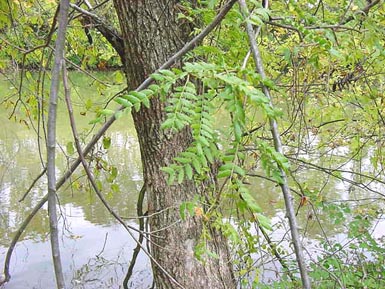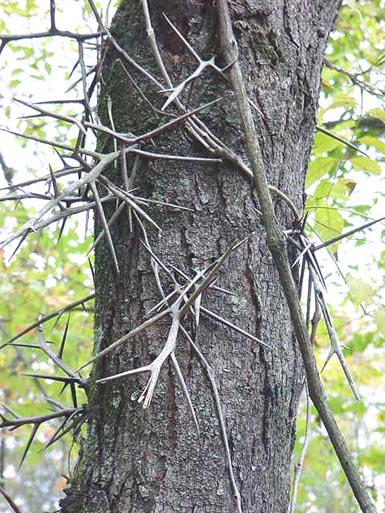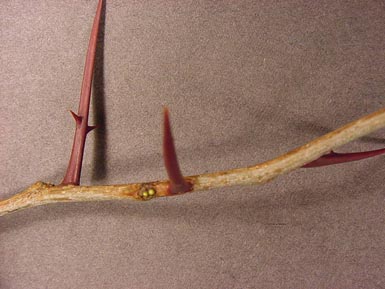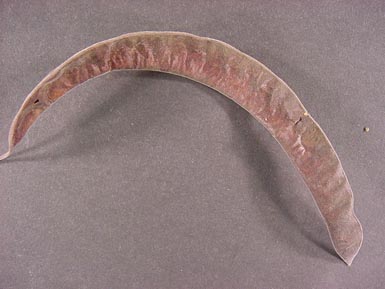Form: This is a medium-sized tree reaching 40-90 ft in height. It generally has a open crown.
Leaves:
Arrangement: alternate; bi-pinnately compound (15-30 leaflets)
Shape: small and oblong leaflets with mucrose tip
Margin: entire
Texture: glabrous
Venation: N/A

Bark: The bark is thin and smooth when young, but develops a dark purplish gray tint with large thorns. It often peels in large pieces.

Twigs and buds: It has large 2-3 branched thorns extending from the twigs.

Flowers and fruit: Flowers are greenish yellow and found in clusters at the leaf base. The fruit is a legume that is found in a large twisted pod.

Distinguishing characteristics: Look for thorned branches, the pea-pod seed, and bi-pinnately compound leaves.
Range: It is found in Michigan south to west Texas and east along the western slopes of the Appalachians.
Silvics: Honeylocust in intolerant of shade. It occurs naturally on moist bottom lands, but can survive when planted on drier sites.
Ecological and cultural importance: It is often used as a local source of wood for fence posts and furniture. Livestock and various species of wildlife eat the seed pods.